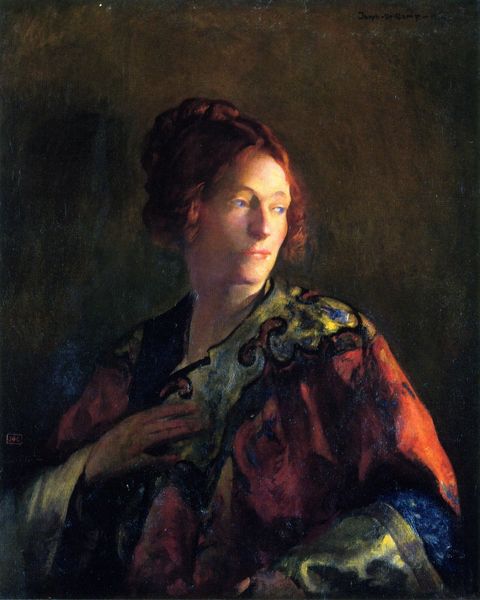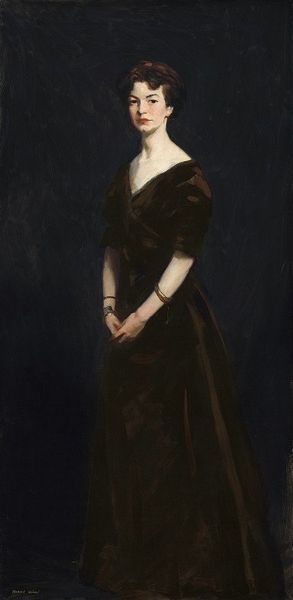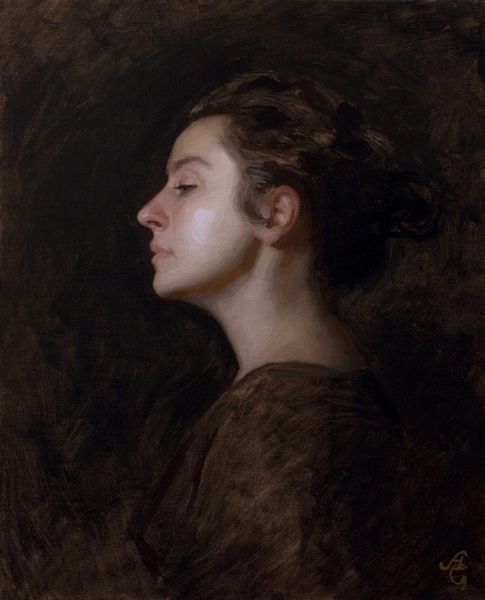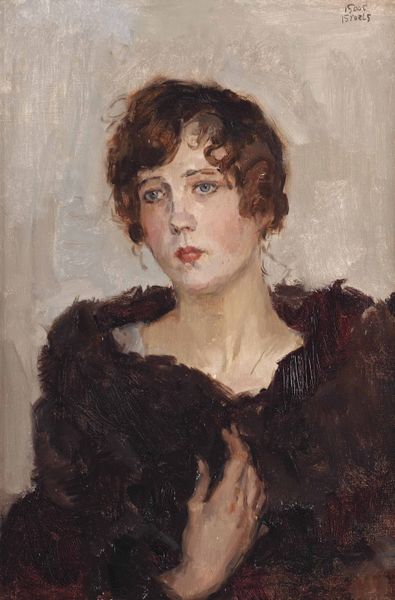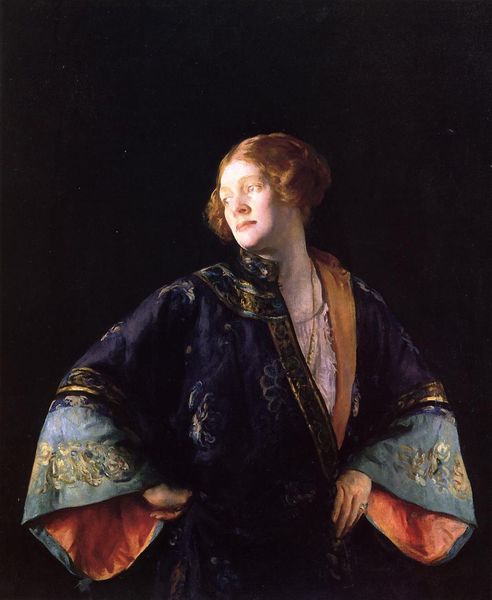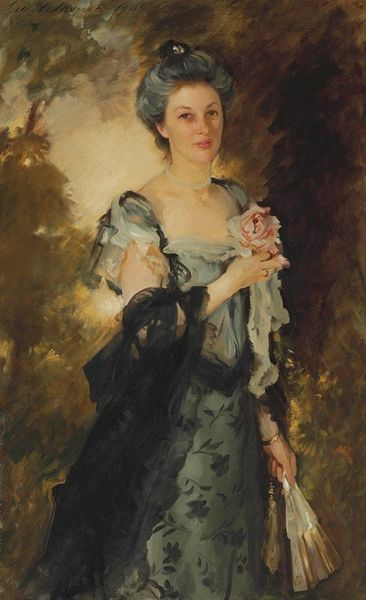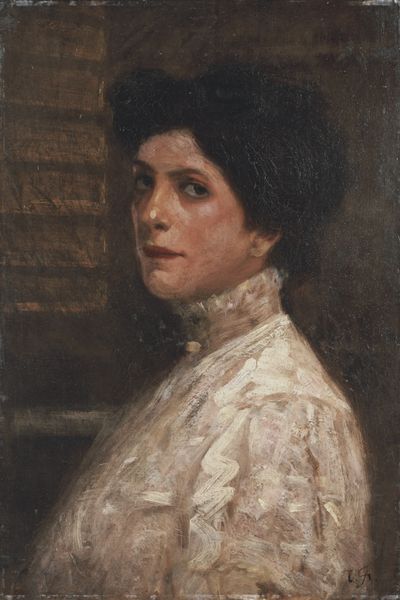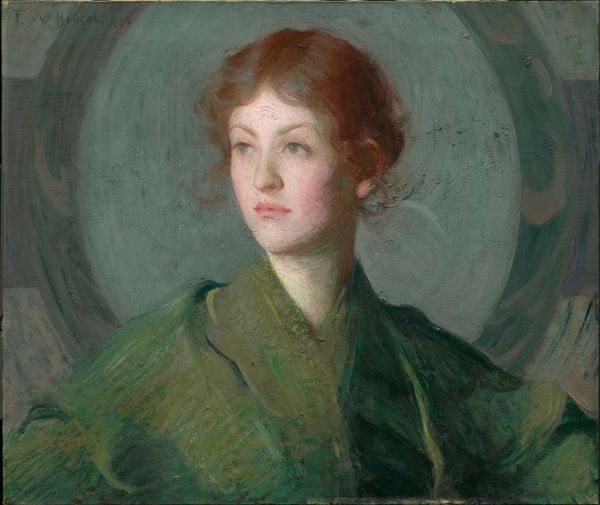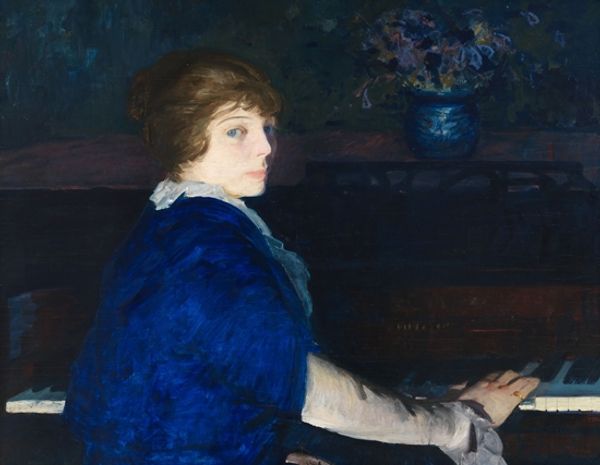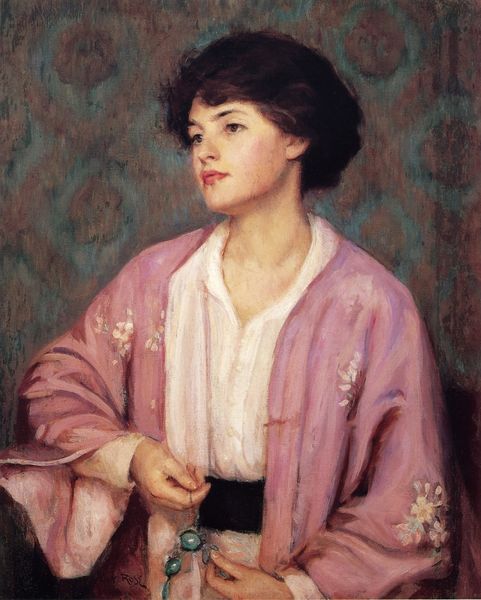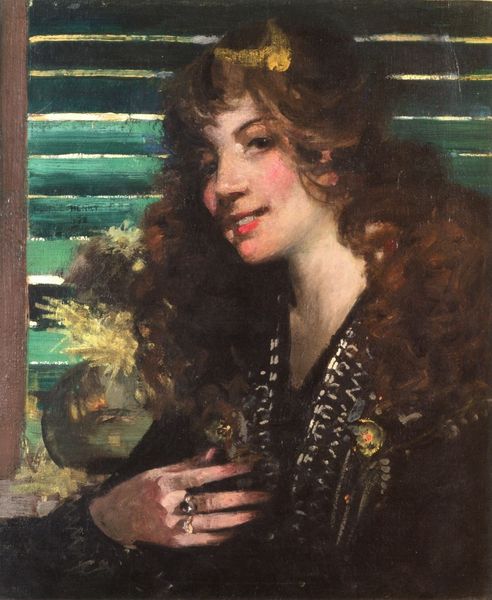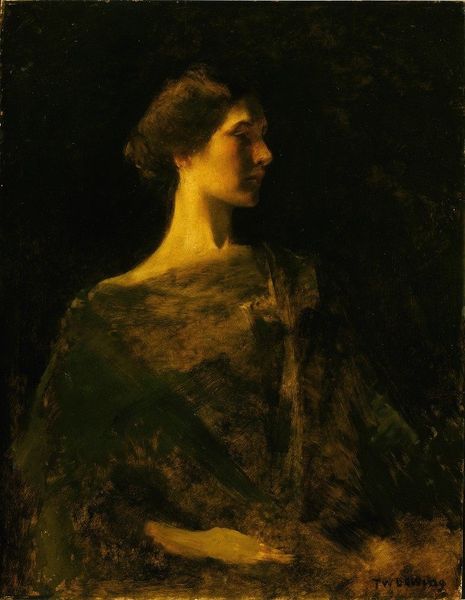
Copyright: Public domain
Editor: This is George Washington Lambert’s 1916 oil painting, "Portrait of a Lady," also known as "Thea Proctor." It’s such a subdued yet elegant piece, particularly the way she’s adorned with jewellery against that dark backdrop. What do you see in this piece from your perspective? Curator: Well, it’s interesting to consider the context. Lambert painted this during the First World War. Notice the academic style, even an element of Impressionism, but rendered with a somewhat muted palette. Consider this portrait within the narrative of art history – what was the role of portraiture during times of social upheaval? Were artists simply maintaining traditions, or perhaps subtly subverting them? Editor: That's a good point. Was the art world grappling with its purpose in the face of such conflict? Curator: Precisely. This image seems to idealise its sitter, who we know to be another artist. Could this image then be a type of marketing, making her someone worthy of social attention and respect, given the social disruption? How might Thea Proctor have perceived the painting? Did it affirm or challenge her sense of identity as a female artist in that era? Editor: So you're saying that beyond just depicting Thea Proctor, the artwork actively participated in shaping her public persona and professional standing within a male-dominated environment? Curator: Precisely! It reveals a fascinating dialogue between the artist, the sitter, and the wider art world, a world deeply impacted by war. Editor: That really shifts my understanding; it’s much more layered than just a simple portrait. Curator: It reminds us to look at the politics of imagery: who is being represented, how, and why. A museum displays a specific narrative of an artwork’s trajectory through public attention. Editor: This discussion really opened my eyes to how social context profoundly shapes our understanding of art. Curator: Indeed. Every artwork carries within it traces of the era in which it was created. We need to excavate those layers.
Comments
No comments
Be the first to comment and join the conversation on the ultimate creative platform.
